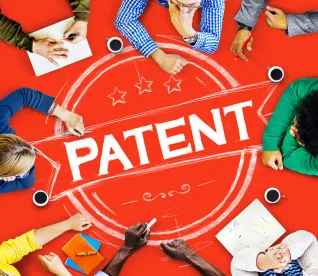In its Final Written Decision, the Board found that Petitioner demonstrated by a preponderance of the evidence that claims 7, 8, 26, and 27 of the ’947 patent are unpatentable. The ’947 patent “describes a method and system for making loans such as mortgages.”
The Board began with an analysis whether the ’947 patent qualifies as a covered business method patent. The Board was persuaded that claims 1 and 7 “meet the first part of the covered business method requirement because they cover a method of processing loan applications and data processing used in the practice, administration, or management of a financial product or service.” In particular, the Board noted that claims 1 and 7 “recite methods of processing loan applications and thus cover a service for the practice, administration, or management of a financial product or service, i.e., a loan.”
Regarding the second part of the analysis, “the AIA excludes patents for ‘technological inventions,’” in which the Board considers “whether the claimed subject matter as a whole recites a technological feature that is novel and unobvious over the prior art; and solves a technical problem using a technical solution.” The Board was persuaded by Petitioner’s unopposed arguments that the claims lack a technological invention. The claims instead recite “the use of known computer hardware and software technologies . . . to accomplish loan processing,” solving “a commercial or business problem of making loan processing less expensive.”
The Board next addressed Patent Owner’s challenge to the constitutionality of covered business method reviews alleging that only courts could “set aside, annul[], or correct[]” issued patents. The Board was not persuaded in view of the recent Federal Circuit decision in MCM Portfolio LLC v. Hewlett-Packard Co., No. 2015-1091, 2015 WL 7755665 (Fed. Cir. Dec. 2, 2015). In MCM, the Federal Circuit held that “Congress can grant authority to the USPTO to correct or cancel issued patents.”
Next, the Board addressed claim interpretation under the broadest reasonable construction in light of the specification. The Board interpreted, in light of the intrinsic evidence, the terms “can bid on loan applications” in claim 7 and “capable of submitting bids on loan applications” in claim 26 as “can offer to make loans on loan applications that are pending in the database.” The Board did not adopt Patent Owner’s proposed construction, noting that the claims “require only that bids are made ‘on’ loan applications, not ‘on and in response to’ loan applications.”
The Board turned to alleged ground of unpatentability of claims 7, 8, 26, and 27 under 35 U.S.C. § 101. The Board held that Petitioner established that “each of the challenged claims is directed to a fundamental economic or longstanding commercial practice of loan processing.” In particular, the Board found that claims 7 and 8 implement known methods in loan processing “on general purpose computers with a lender station that allows lenders to search a database of loan applications for desired types of loans, bid on selected applications, and receive notices of bid acceptances.” Similarly, the Board found that claims 26 and 27 recite generic computer components performing abstract methods.
The Board found the claims at issue to be similar to those found ineligible in Alice. As in Alice, “the challenged claims effectively recite an intermediary database of loan applications that parties can search, update, and bid on using a lender station.” The Board also cited several Federal Circuit cases holding the automation of price optimization and the collection, manipulation, and processing of data, as similarly recited in the challenged claims, to be abstract ideas.
The Board then analyzed whether the challenged claims contain an “inventive concept” transforming the claims into a patent-eligible application of an abstract idea. The Board was persuaded by a preponderance of the evidence that the claims do not recite an inventive concept, finding each of Patent Owner’s arguments to be unpersuasive. Patent Owner argued that the claims “do not preempt the concept of managing a loan process, and the Petition does not allege that ‘search[ing] the database for particular desired types of loans’ is a purely conventional function.” The Board was not persuaded, noting that “[t]he mere existence of a non-preempted use of an abstract idea does not prove that a claim recites patent-eligible subject matter.” Moreover, the Board found searching a database of pending loans to be conventional, and that the recited computer features were only generic computer components performing conventional computer functions.
Patent Owner’s argument that the “challenged claims reverse the rate sheet technique of conventional loans by allowing brokers to solicit lenders to bid for borrowers’ mortgages (PO Resp. 9–11, 13)” was found unpersuasive. In this regard, the Board found that “merely combining an abstract idea like a reverse auction with conventional loan processing does not create an inventive step by itself.”
Patent Owner also presented evidence that its commercial platform “was viewed as revolutionary.” The Board, however, was not persuaded that the success of the “Internet-based business-to-business network” was relevant to the inventive concept of the claims, which “do not recite such an Internet-based method or system.”
Finally, the Board addressed Patent Owner’s argument that Section 101 is not a ground of unpatentability that could be asserted in a covered business method patent review. The Board was not persuaded in view of the Federal Circuit’s holding that Section 101 could be considered in a covered business method patent review in Versata Development Group, Inc. v. SAP America, Inc., 793 F.3d 1306, 1330 (Fed. Cir. 2015).
E-Loan, Inc. v. IMX, Inc., CBM2015-00012
Paper 19: Final Written Decision
Dated: February 16, 2016
Patent: 5,995,947
Before: James P. Calve, Matthew R. Clements, and Brian P. Murphy
Written by: Calve



 />i
/>i

